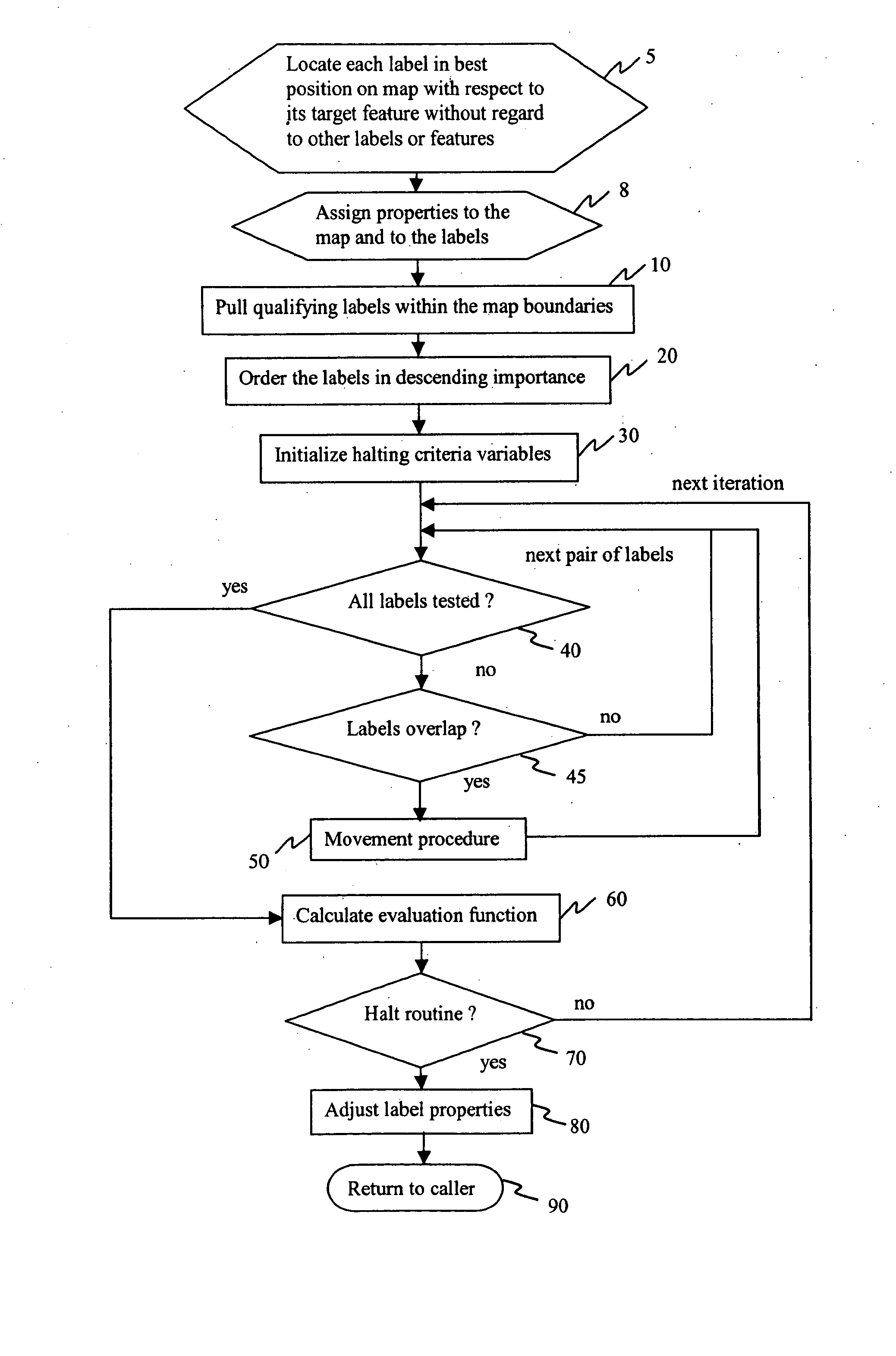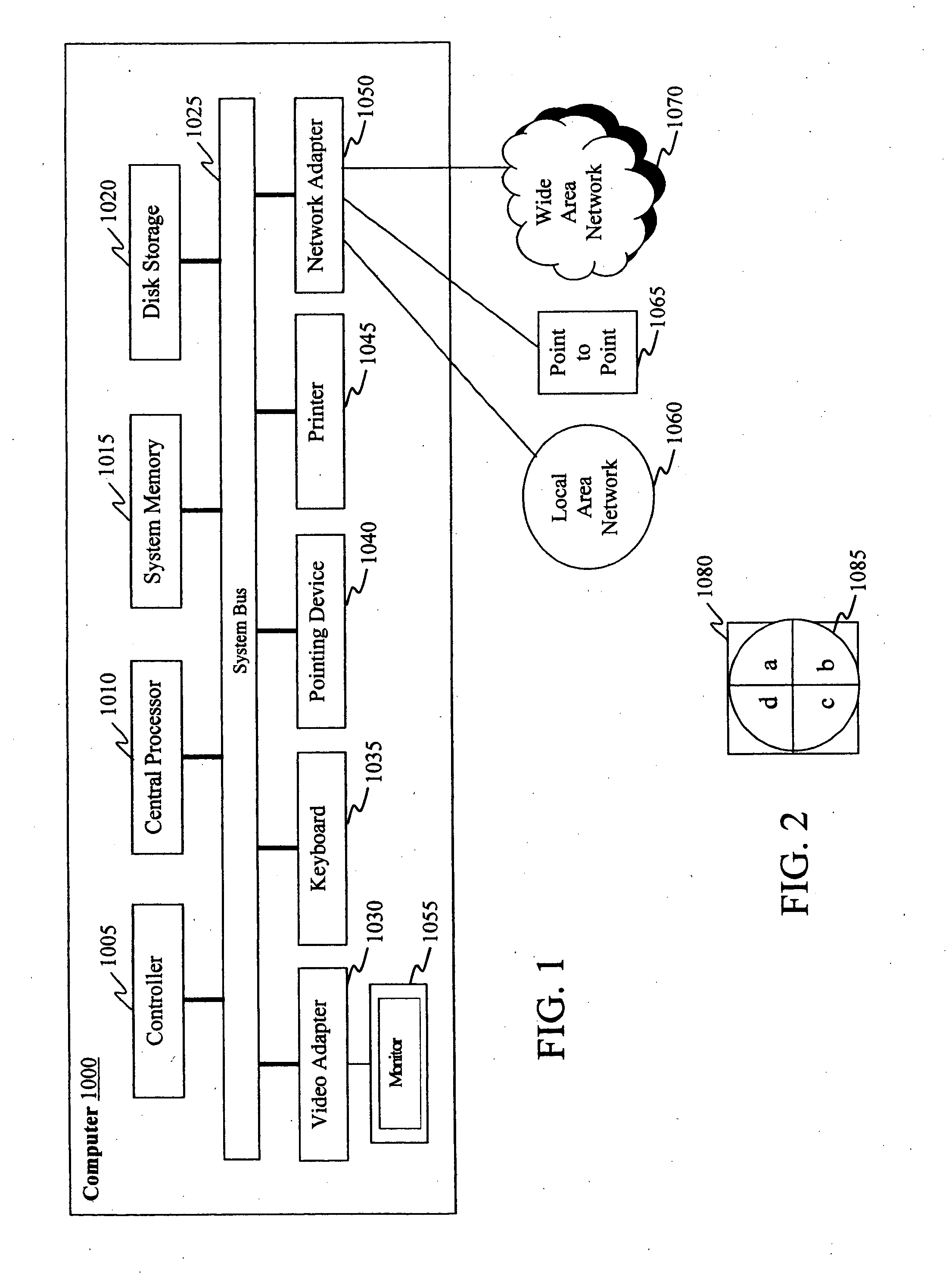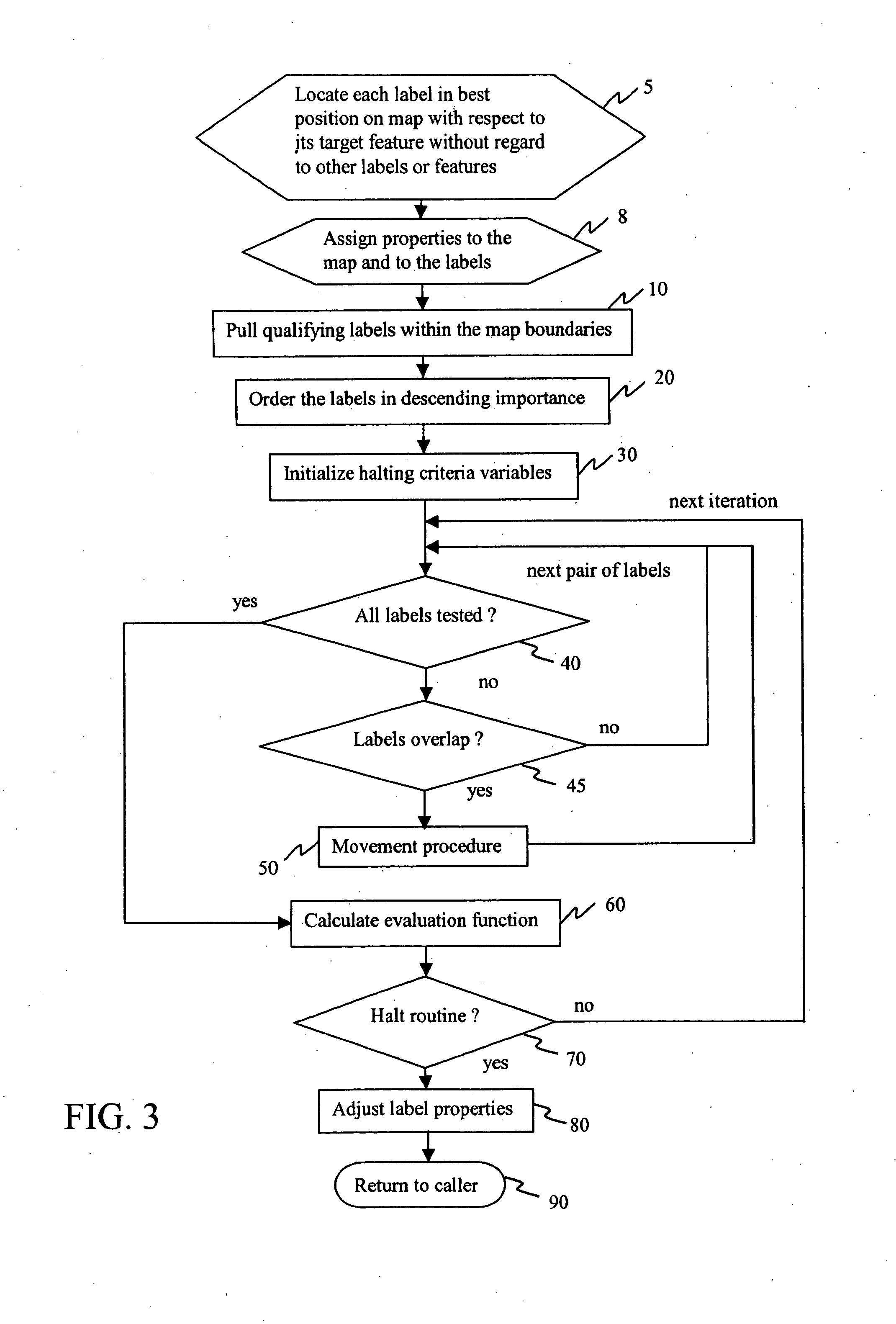System and method for labeling maps
a map and labeling technology, applied in the field of system and method for labeling maps, can solve the problems of poor labeling, unacceptable maps, and random selection of labels for each label position, and achieve the effect of generating poor labeling, combinatorial optimization problems, and inability to accept maps
- Summary
- Abstract
- Description
- Claims
- Application Information
AI Technical Summary
Benefits of technology
Problems solved by technology
Method used
Image
Examples
Embodiment Construction
[0026] Referring initially to FIG. 1, a system is shown which includes a digital processing apparatus. This system is a general-purpose computer 1000. The computer may include a graphics display, print hardware, and print software, or may be as simple as a generic personal computer. The example computer in FIG. 1 includes central processor 1010, system memory 1015, disk storage 1020 (e.g., hard drive, floppy drive, CD-ROM drive, or DVD drive), controller 1005, network adapter 1050, video adapter 1030, and monitor 1055. Data input may be through one or more of the following agencies: keyboard 1035, pointing device 1040, disk storage 1020, local area network 1060, point to point communications 1065, and wide area network 1070 (e.g., internet).
[0027] One or more features of the computer as shown may be omitted while still permitting the practice of the invention. For example, printer 1045 is not necessary for maps intended to be displayed only on monitor 1055. Likewise, network adapte...
PUM
 Login to View More
Login to View More Abstract
Description
Claims
Application Information
 Login to View More
Login to View More - R&D
- Intellectual Property
- Life Sciences
- Materials
- Tech Scout
- Unparalleled Data Quality
- Higher Quality Content
- 60% Fewer Hallucinations
Browse by: Latest US Patents, China's latest patents, Technical Efficacy Thesaurus, Application Domain, Technology Topic, Popular Technical Reports.
© 2025 PatSnap. All rights reserved.Legal|Privacy policy|Modern Slavery Act Transparency Statement|Sitemap|About US| Contact US: help@patsnap.com



